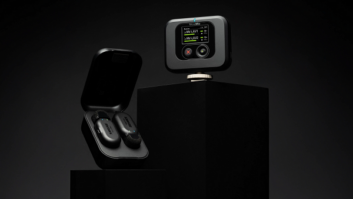New York — AT&T executives outlined a growth strategy that includes the addition of new wireless services for the home and car, including the wireless delivery of subscribers’ U-verse programming to vehicles.
The company also announced that it will expand its 4G LTE network to reach 300 million people by the end of 2014, or 50 million more than previously announced, thanks to its acquisition of new spectrum, executives said during an investors’ conference here.
In outlining other revenue and profit-boosting strategies, AT&T executives said:
AT&Twill expand the footprint of its wireline IP-based U-verse TV and broadband service by a third to reach 75 percent of its wireless-service customer locations in 22 states by the end of 2015, or 8.5 million more locations.
Its Digital Life IP-based home automation and security service will launch commercially in early 2013 following trials this year in two markets; it uses smartphones and tablets to control and monitor security, lighting, HVAC and other home systems remotely and from within the home.
The carrier said it will spend $8 billion to make its wireless network more dense, adding 10,000 more macro cell sites and building more than 40,000 neighborhood, or small, cells to improve capacity, accelerate data speeds, and improve in-building coverage. The first HSPA+/UMTS small cells have been installed, and general deployment will begin in the first quarter of 2013. The rollout of 4G LTE small cells starts in 2014.
In detailing new wireless services for the home and car, AT&T Mobility president/CEO Ralph de la Vega said the company would expand the connected-car concept beyond current telematics services focused on “front-seat” safety and security services. AT&T will add such value-added services as delivering U-verse programming to the back seat, accessing games, obtaining real-time traffic updates, using voice commands to send data files, and the like.
AT&T will announce deals with several major automakers soon, he said.
In quantifying the opportunity, de la Vega said 53 percent of all new cars sold in 2016 will come with embedded connectivity.
The potential for AT&T’s IP-based home control service is also large, he said, because the penetration rate of home security and monitoring services is only 20 percent because of a lack of affordable solutions. A wireless IP-based system cuts investment costs in half compared to wired systems, helping to AT&T will expand the market, he said.
The company, which plans a basic package starting at $29/month, will be a disruptive force in a home security industry that is $18 billion in size and enjoys margins of 35 to 40 points, he noted.
Also for the home, AT&T is leveraging its wireless network to roll out wireless LTE-based home voice to homes , which can use their existing home phones for voice. Data will eventually be added to the home service, de la Vega said. AT&T recently expanded this offer nationwide through its 2,200 company owned retail stores as well as dealer locations.
In outlining other capacity-expanding plans, executives said that through 2014, they will deploy spectrum acquired in recent deals to keep up with data demand. In 2015, the carrier will begin using its 2.3GHz WCS (wireless communications service) spectrum for LTE service now that the FCC has revised the spectrum’s rules to prevent interference with the nearby satellite-radio band. AT&T owns almost 30MHz of WCS spectrum nationwide.
The WCS spectrum will enable AT&T to keep up with demand through 2017, and after that, the company will have to keep up by making improvements in network efficiency and by using spectrum acquired through planned spectrum auctions.













